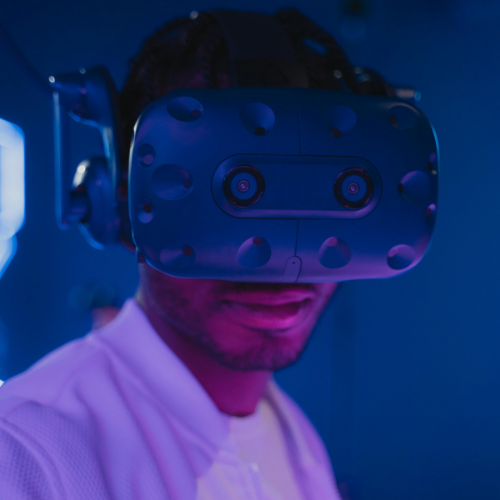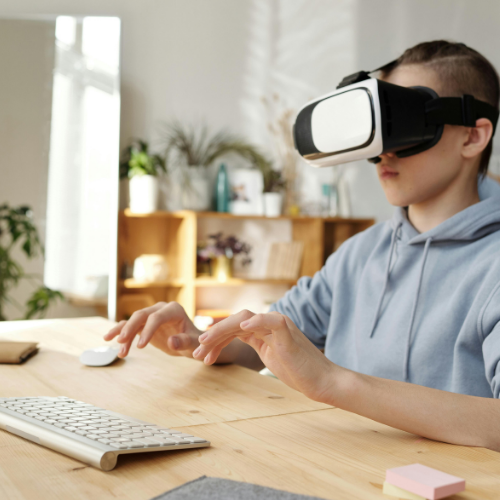Introduction
Technology has always influenced how we live, work, and interact with others. In fact, two of the most exciting technologies reshaping our digital experience today, Augmented Reality (AR) and Virtual Reality (VR), are both rapidly gaining traction over the last ten years, transforming every industry from gaming and healthcare to education, business, and entertainment.
And as many continue to figure out how to leverage AR and VR, I feel that the question remains, “Ultimately, which technology is the future?”

In this article, we’ll look closely at what AR and VR are, what work they do, and their benefits, possibilities, and challenges, while exploring their potential impact on the future of our digital world.
What is Augmented Reality (AR)?
Augmented Reality (AR) brings digital elements, such as images, animations, or information, into view of the real world using devices like smartphones, AR glasses, or headsets.
Example: Mobile games like Pokémon Go, or AR shopping apps that let you see how your new couch will look in your living room before making a purchase.
Main Goal: To enhance the real world by adding interactive, digital elements to it.
Benefits of AR:
Augmented Reality can
Enhance real-world experiences
Make education, training, and navigation easier
Be inexpensive (as it can use just smartphones!)
be useful in retail, healthcare and industry context
What is Virtual Reality (VR)?
Virtual Reality (VR) creates a completely immersive digital world by replacing

Uses of Augmented Reality (AR)
- Retail & Shopping
AR allows customers to virtually try on clothing, shoes, or makeup before they purchase them. - Education
AR enables students to experience historical events, human anatomy, or science experiments with interactive AR overlays. - Healthcare
In healthcare, augmented reality is used to provide access to real-time data for surgeons as well as for live training simulations. - Navigation & Travel
AR-based maps and apps provide users with interactive maps and directions.
Uses of Virtual Reality (VR)
- Gaming & Entertainment
VR provides immersive spaces for gaming and movie experiences. - Training & Simulations
VR allows for the training of pilots, military exercises, or practice in a medical field. - Therapy & Mental Health
Applications of VR include using VR technology to treat PTSD, phobias, as well as stress; VR creates controlled environments. - Architecture & Real Estate
Potential clients can experience 3D models of buildings prior to the construction phase.
Challenges of AR
Lack of platforms or hardware (AR glasses are still in development) and privacy issues, particularly threats around data collection and use, means not many people adopt it during their daily lives.
VR Challenges
Expensive equipment and installation
Potential for motion sickness
Incompatibility with real-world environments
What Will Win: AR or VR?
Debate on whether AR or VR ultimately wins depends on use cases and respective industries’ adoption.
AR will likely win in day-to-day life as it enhances reality versus taking away from it. The average user has more potential uses of AR, like in retail shopping, healthcare, etc.
VR will continue to excel in entertainment, gaming, and specialized training, which benefit from immersion.
In many expert’s perspectives, AR may eventually become more widely adopted because there are devices that already support it everywhere, whereas VR may always remain more niche but powerful in selected industries requiring immersive experiences.
Future AR and VR
AR’s potential:
Deeply ingrained in retail, healthcare, and mobile applications.
Headset, smart glasses, and wearables.
Becoming a critical tool for both businesses and users.
VR potential:
To continue its growth in gaming, education, and healthcare.
Expansion into providing a platform to create metaverses.
Incorporate more realistic scenarios with haptics and next-gen AI.
The Likely Reality
It may not be AR vs VR, but rather AR and VR, fulfilling many different purposes. Each can coexist together and are ushering in and leading to the emergence of Mixed Reality (MR) and Extended Reality (XR), which is a hybrid where the physical and digital worlds can flow seamlessly together.
